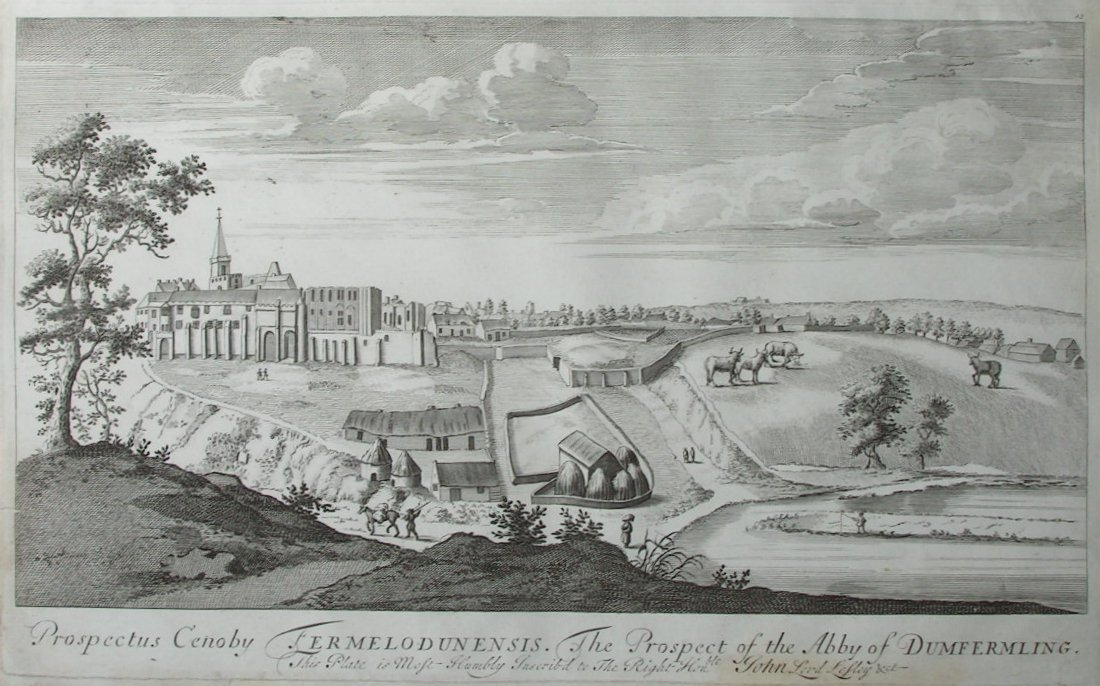Topic Originator: Bletchley_Par
Date: Thu 12 Jun 02:27
"Dunfermline from the South East"
Circa 1830 painted on a summer evening by an unknown artist showing a man and boy with a fishing pole. The man is wearing a Tam o` Shanter hat. The street in the background is Moodie street and the Lyne River in all it`s glory.
The mound with trees is Perdieus Mount which was made by pilgrims to the Abbey who brought sand as a ascetic practice from Limekilns and Charlston where they would`ve landed.

"Prospectus Cenoby Fermelodunensis" - The Prospect of the Abby of Dumfermling.
Etched in around 1810 by John Slezer, probally dipicting Dunfermline in around 1400. Bit of artistic licence by the artist in the Father Dougal style as evidenced by the far away cows being very large.

"Abbey Porch, including part of the Town of Dunfermline."
A copper plate engraving by Sleazer, probally again around 1810 but a contempoary dipiction of the town. The Old Inn in the backgound awaiting it`s greatest moment a mere 75 years later.
The "Devil`s Hole" is viable on the right which may have been a gate offering food to the poor by the monks when the Abbey was functioning

"View of the Royal Palace and Abbey of Dumfermline"
Drawn by Paul Sandby, Engraved by T. Woodyer.
The discription of this is from "The Pennant`s Tour in Scotland"
"This place is very populous. The number of inhabitants are between six and seven thousand and such have been the improvements in manufactures as to have increased near double its ancient number within the last twelve years.
The manufactures are damaslis, diapers, checks and ticking, to the amount of forty thousand pounds a year.
These employ in town and neighbourhood about a thousand looms. 1 was informed that the number might be doubled if it was not prevented by the low duty on foreign linens, which encourages a foreign importation. But probably some other branch of British trade might receive its injury in a greater degree, was that importation to be checked.
That the iron businel`s does not flourish more in this place is a matter of supply.
Iron stone abounds. Here are collieries in all parts, even to the very entrance of the town and the coals of such variety, that in different parts are found, besides the Scotch, those which have the qualities of the Newcastle, and of the Kilkenny.
I am informed that, on the Pittencrief estate, are seven seams of coals in the depth of thirty fathom, from the thickness of two to that of eight feet, all of which may be worked with a level without the appliance of any machinery. The price of coal here is from twenty-pence to half-a-crown a ton. "

Post Edited (Thu 12 Jun 03:48)
|
|

